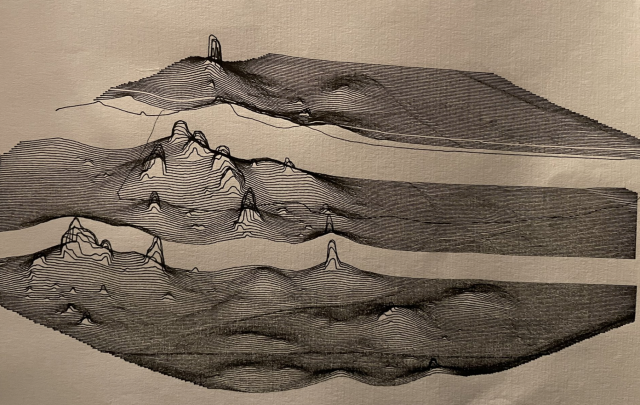I’ve engaged with #PlotterTwitter before – I have an axidraw and I unfortunately use Twitter. I really admire Michelle Chandra and Frederik Vanhoutte’s prints. The geometric repetition of their prints appeal to me.
I was pleasantly surprised to see a lot of interdisciplinary work with plotters and odd applications of plotters on PlotterTwitter. For example, one user posted a video of two axidraws painting in watercolor. The svg files for those plots must be daunting to look at.
I admired the use of multiple different pen thicknesses to enhance different prints, but pens that have a round nib tend to be the standard. I’d like to see what a print from a chiseled pen or marker would look like. I also want to see prints that challenge the purpose of a plotter. Instead of thinking of it as a robotic arm that draws, one can view it as a guide or an arm that can pick up, hold, move, or stab things. There’s this minigame from Rhythm Heaven, a rhythm game I use to play in my childhood, where you control a hand wielding a fork and your goal is to stab food that is flicked to you across the table. For some reason, I wish for an axidraw to do that.
The post that I appreciated the most involves a collaboration of a photographer and a plottermeister (using “plotter” for someone who uses a plotter to generate art doesn’t seem right, but “plottermeister” has a nice ring to it).
I like that this project clashes nature’s randomness with digital precision. It’s a good juxtaposition.
 That honestly blew my mind because I really didn’t expect anything like that but I loved the combination of both fine lines and more doodle-like lines in creating this project.
That honestly blew my mind because I really didn’t expect anything like that but I loved the combination of both fine lines and more doodle-like lines in creating this project.